Do you have a question about the Yamaha TT-R110 2023 and is the answer not in the manual?
Key safety advice and instructions for safe motorcycle operation.
Guidance for parents on supervising children operating the motorcycle.
Explains symbols like WARNING, NOTICE, and TIP used in the manual.
Details the importance and location of various labels on the vehicle.
Emphasizes owner responsibility for safe motorcycle operation and rider qualifications.
Provides guidelines for safe riding, including pre-operation checks and road awareness.
Recommends essential protective gear for motorcycle riders.
Warns about the dangers of carbon monoxide and provides safety measures.
Advice on how to load the motorcycle to maintain stability and safety.
Information on approved Yamaha accessories and their benefits.
Discusses potential risks and considerations for aftermarket parts.
Guidance on selecting appropriate tires and rims for the motorcycle.
Instructions and precautions for safely transporting the motorcycle.
Identifies key parts of the motorcycle from the left side view.
Identifies key parts of the motorcycle from the right side view.
Details the location and function of the motorcycle's controls and instruments.
Explains the functions of the main switch and its positions.
Describes the operation of switches located on the handlebar.
Details the location and function of the motorcycle's shift pedal.
Explains the operation of the front brake lever.
Explains the operation of the rear brake pedal.
Instructions for removing and installing the fuel tank cap.
Information on fuel type, tank capacity, and refueling safety.
Instructions for checking and maintaining the fuel tank breather hose.
Explains the three positions of the fuel cock and their functions.
Details the operation of the starter (choke) lever for cold engines.
Instructions on how to use the kickstarter to start the engine.
Procedure for removing and installing the motorcycle seat.
Safety precautions for handling the shock absorber assembly.
Information on the sidestand's location and safe operation.
Explains the function and checking procedure of the starting circuit cut-off system.
Guidelines for the critical initial 5 hours of engine operation for longevity.
Step-by-step procedure for starting and warming up a cold engine.
Procedure for starting the engine when it is already warm.
Explanation of the 4-speed transmission and shifting procedures.
Instructions on how to park the motorcycle safely and securely.
Details the tools included in the owner's kit and their purpose.
Instructions for removing and installing body panels for maintenance access.
Procedure for checking the spark plug condition and gap.
Guidance on checking the engine oil level and performing oil changes.
Steps for cleaning or replacing the air filter element for optimal performance.
Procedure for cleaning the spark arrester to maintain exhaust system efficiency.
Advice on carburetor adjustments, recommending dealer service for complex tasks.
Procedure for checking and adjusting the engine's idling speed.
Instructions for measuring and adjusting throttle grip free play.
Importance of checking and adjusting valve clearance for engine health.
Essential information regarding tire maintenance, pressure, and inspection.
Guidelines for checking and adjusting tire air pressure for safe riding.
Procedure for inspecting tire condition, tread depth, and damage.
Key points for maintaining spoke wheels for performance and safety.
Steps for checking and adjusting the clutch lever free play.
Procedure for measuring and adjusting the front brake lever free play.
Instructions for checking and adjusting the rear brake pedal free play.
Ensuring smooth operation of the shift pedal before each ride.
How to check brake shoe wear using the indicator.
Procedure for checking and adjusting drive chain slack for optimal performance.
Steps for cleaning and lubricating the drive chain to prevent wear.
Guidance on inspecting and lubricating control cables for smooth operation.
How to check and lubricate the throttle grip and cable.
Procedure for checking and lubricating the brake lever pivot.
Procedure for checking and lubricating the brake pedal pivot.
How to lubricate the sidestand pivot and related surfaces.
Instructions for lubricating swingarm pivots, typically done by a dealer.
Procedure for checking the condition and operation of the front fork.
How to check for wear or looseness in the steering bearings.
Procedure for checking the condition of wheel bearings.
Information on battery type, location, and basic checks.
Step-by-step guide for replacing a blown fuse.
Precautions for safely supporting the motorcycle during maintenance.
Instructions for removing and installing the front wheel.
Instructions for removing and installing the rear wheel.
Specific advice for cleaning and caring for matte finish parts.
Detailed instructions for washing the motorcycle to maintain appearance and performance.
Step-by-step guide for washing the vehicle, including precautions.
Steps to take after washing, including drying and polishing.
Recommendations for storing the motorcycle to protect it and maintain its condition.
Details on vehicle identification, engine serial, and key numbers for registration and parts.
Location and purpose of the model label for ordering spare parts.
Information on the key identification number for ordering new keys.
Details on the emission control information label and its significance.
Information on regulations prohibiting tampering with the noise control system.
Details the warranty coverage for the motorcycle's emission control system.
Procedure for transferring the warranty to a new owner.
Explains the benefits and flexibility of the Yamaha Extended Service plan.
| Brand | Yamaha |
|---|---|
| Model | TT-R110 2023 |
| Category | Motorcycle |
| Language | English |





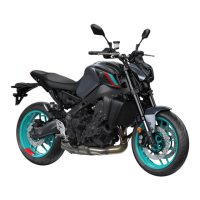

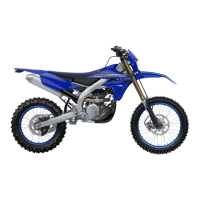
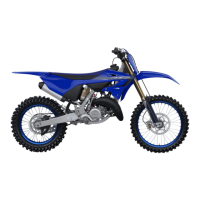
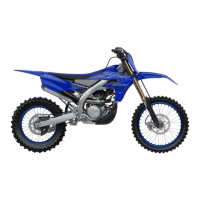
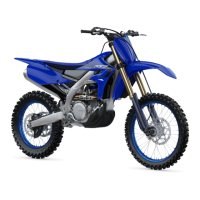

